Philips 109F5, 107T5, 107E5, 107F5, 107S5 User Manual
...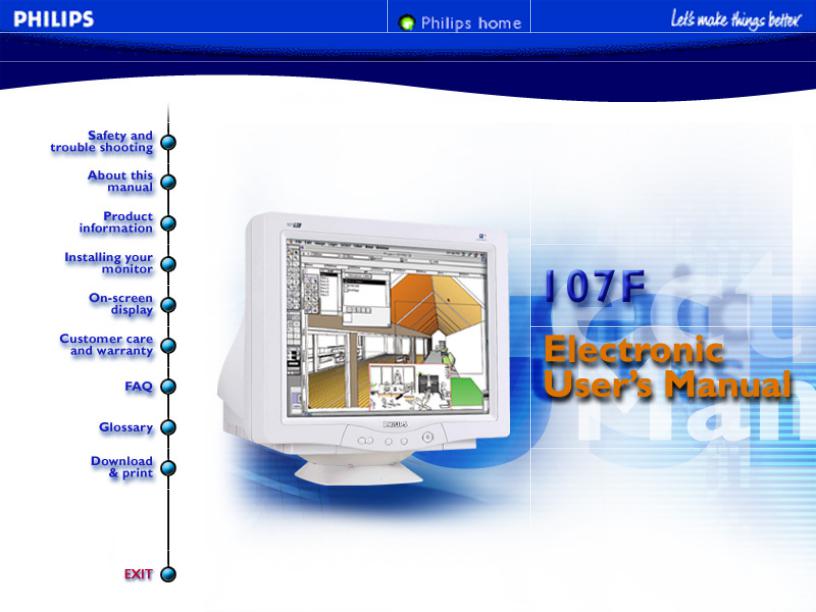
electronic user's manual
file:///D|/EDFU/crt_17_5/edoc/ENGLISH/107F/manual.html7/15/2004 5:32:10 PM

Safety & Troubleshooting
Safety and Troubleshooting Information
Safety Precautions and Maintenance • Troubleshooting • Regulatory Information • Other Related Information
Safety precautions and maintenance
WARNING: Use of controls, adjustments, or procedures other than those specified in this documentation may result in exposure to shock, electrical hazards, and/or mechanical hazards.
Read and follow these instructions when connecting and using your computer monitor:
●Disconnect the monitor from the power supply if the monitor is not to be used for an extended period of time.
●Do not attempt to remove the back cover, as you will be exposed to a shock hazard. The back cover should only be removed by qualified service personnel.
●Do not place objects on top of the monitor cabinet, objects could fall into vents or cover them and prevent proper cooling of the monitor's electronic devices.
●To avoid the risk of shock or permanent damage to the set, do not expose the monitor to rain or excessive moisture.
●Do not use alcohol or ammonia-based liquid to clean the monitor. If necessary, clean with a slightly damp cloth. Disconnect the monitor from the power supply before cleaning.
●When positioning the monitor, make sure the power plug and outlet are easily accessible.
Consult a service technician if the monitor does not operate normally when operating instructions of this manual are followed.
RETURN TO TOP OF THE PAGE
file:///D|/EDFU/crt_17_5/edoc/ENGLISH/107F/SAFETY/SAFETY.HTM7/15/2004 5:32:41 PM

About This Electronic User's Manual
About This Electronic User's Manual
About This Guide • Other Documents You May Need • Notational Descriptions
About This Guide
This electronic user's guide is intended for anyone who uses the Philips Color Monitor. It describes the monitor's features, setup, operation and all other information, which is the same exact information described in our printed version.
The sections are as follows:
●Safety and Troubleshooting Information provides tips and solutions for common problems, and other related information you may need.
●About This Electronic User's Manual gives overview of what information are included as well as notation icon descriptions and other documentation you can refer to.
●Product Information gives an overview of the monitor's features and as well as the technical specifications for this monitor.
●Installing Your Monitor describes the initial setup process and gives an overview of how to use the monitor.
●On Screen Display provides information on adjusting the settings on your monitor.
●Customer Care and Warranty is a list of worldwide Philips consumer information centers along with the help desk phone numbers and information on the applicable warranty of your product..
●Glossary provides more information for technical terms.
●Download allows users to install the entire manual on their hard drive.
●Frequently Asked Questions provides answers to commonly asked questions.
RETURN TO TOP OF THE PAGE
Other Documents You May Need
In addition to this Electronic User's Guide, you may need to refer to the following documentation:
file:///D|/EDFU/crt_17_5/edoc/ENGLISH/107F/ABOUT/ABOUT.HTM (1 of 3)7/15/2004 5:32:41 PM
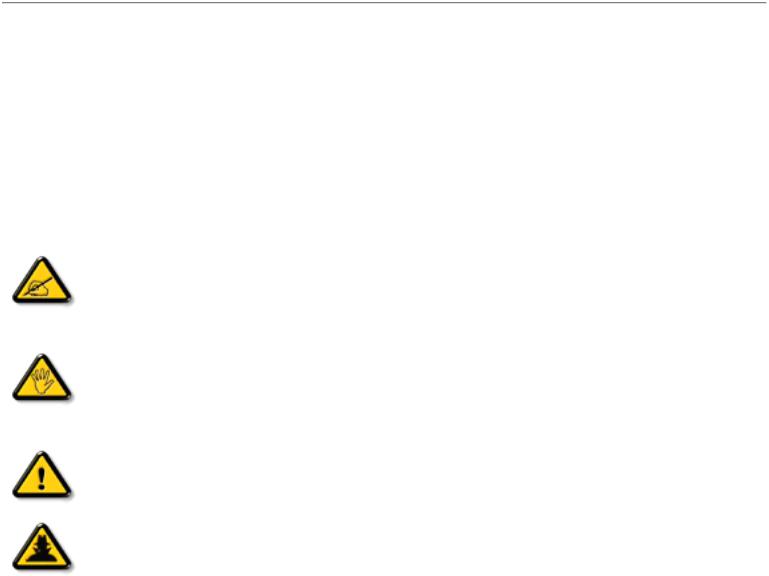
About This Electronic User's Manual
●Philips Color Monitor Quick Start Guide which summarizes the steps for setting up the monitor. This is included with this product.
RETURN TO TOP OF THE PAGE
Notational Descriptions
The following subsections describe notational conventions used in this document.
Notes, Cautions, and Warnings
Throughout this guide, blocks of text may be accompanied by an icon and printed in bold type or in italic type. These blocks are notes, cautions, and warnings, and they are used as follows:
NOTE: This icon indicates important information and tips that help you make better use of your computer system.
CAUTION: This icon indicates information that tells you how to avoid either potential damage to hardware or loss of data.
WARNING: This icon indicates the potential for bodily harm and tells you how to avoid the problem.
SMART HELP: This icon indicates helpful information when adjusting the On Screen Display of your monitor.
Some warnings may appear in alternate formats and may be unaccompanied by an icon. In such cases, the specific presentation of the warning is mandated by regulatory authority.
RETURN TO TOP OF THE PAGE
file:///D|/EDFU/crt_17_5/edoc/ENGLISH/107F/ABOUT/ABOUT.HTM (2 of 3)7/15/2004 5:32:41 PM

About This Electronic User's Manual
©2003 Koninklijke Philips Electronics N.V.
All rights reserved. Reproduction, copying, usage, modifying, hiring, renting, public performance, transmission and/or broadcasting in whole or in part is prohibited without written consent of Philips Electronics N.V.
file:///D|/EDFU/crt_17_5/edoc/ENGLISH/107F/ABOUT/ABOUT.HTM (3 of 3)7/15/2004 5:32:41 PM

107F Product Information
Product Information
Product Features • LightFrame™ for Windows • Technical Specifications • Automatic Power Saving • Physical Specification • Pin Assignment • Product Views
Product Features
Model |
Regulation |
Color |
107F51 |
MPRII |
Gray |
107F56 |
MPRII |
Blue/Silver |
107F5
●17-inch (16.0" VIS) color monitor with excellent front of screen performance for use with
MACs and PCs
●Autoscan covers horizontal frequencies up to 71 kHz offering a maximum resolution of 1280 x 1024 with flicker free display of 1024 x 768 at up to 89 Hz.
●Real Flat High Contrast CRT with high-resolution 0.25 mm dot pitch (0.21 hdp)
●LightFrame™ for brightest and sharpest display of movie and photo windows.
●Large screen display in a small footprint: 17-inch conventional monitor with maximum depth of only 424 mm/16.7"
●Multimedia Base option.
●sRGB for true on screen color representation.
●FCC, CE (in selected countries only) and ISO9241, ISO14001 certified
RETURN TO TOP OF THE PAGE
LightFrame™ for Windows
file:///D|/EDFU/crt_17_5/edoc/ENGLISH/107F/PRODUCT/PRODUCT.HTM (1 of 12)7/15/2004 5:32:43 PM
107F Product Information
Introduction
Philips LightFrame™ feature enriches the experience of pictures and video on a Philips CRT
(picture tube) monitor. LightFrame™ will boost the brightness and sharpness of photos and videos on the monitor screen.
To control the LightFrame™ feature in your monitor, you have to install the LightFrame™ application which you will find on this CD-ROM.
Note
Philips LightFrame™ will only work with monitors that have been built to use this software. Earlier Philips monitors or other manufacturers’ monitors will not work with this special software. It is recommended that you install this software only on a Philips monitor designed to use it. These monitors can be identified by the LightFrame™ logo on the front of the monitor.
This software is not designed for use with LCD flat screen monitors.
LightFrame™ will work with true Windows-based programs and DOS-based programs that operate in a Windows environment. It will not work with DOS-based programs operating only in a DOS environment.
Language Selection
While English is the default language of LightFrame™, the User Interface can be set up to operate in Dutch, French, German, Italian, Portuguese, Spanish, Simplified Chinese, Traditional Chinese or
Korean.
Installation
1)To install LightFrame™, place the CD in the CD-ROM drive.
2)Next, when the menu of items on the CD appears on your screen, click on 'Install LightFrame™'.
file:///D|/EDFU/crt_17_5/edoc/ENGLISH/107F/PRODUCT/PRODUCT.HTM (2 of 12)7/15/2004 5:32:43 PM
107F Product Information
3)Now, follow the on-screen prompts to properly install the program. The software checks to see if you have a compatible monitor. You must agree to the license agreement terms for the software to install.
4)After installation, LightFrame™ automatically loads and the icon appears in the taskbar.
Notes
If LightFrame™ detects that your monitor is not LightFrame™ compatible, a message appears on the monitor screen. If you see this message, you can select to abort or continue the installation.
However, if you continue the installation, LightFrame™ will probably not work on the monitor.
How to use LightFrame™
After installation, LightFrame™ starts up automatically whenever the computer is started.
For information about using LightFrame™ please refer to the help information which is available after installation.
Compatibility
This version of LightFrame™ is compatible with
Windows® 95
Windows® 98
Windows® Me (Millenium Edition)
Windows® XP
Windows® 2000 Professional Edition.
LightFrame™ 3 -- Frequently Asked Questions (and answers)
LightFrame™
Q: Is LightFrame™ 2 compatible with LightFrame™ 3?
file:///D|/EDFU/crt_17_5/edoc/ENGLISH/107F/PRODUCT/PRODUCT.HTM (3 of 12)7/15/2004 5:32:43 PM
107F Product Information
A: No. If you run LightFrame™ 1 or 2 software with a Philips LightFrame™ 3 monitor, nothing will happen.
Q:Can I use LightFrame™ 3 software on my LightFrame™ 1 / 2 monitor.
A:No for a LightFrame™ 1 or 2 monitor you need to use LightFrame™ 1 or 2 software. It is however possible to use the LightFrame™ 2 software on a LightFrame™ 1 monitor.
Q:What is the difference between LightFrame™ 1, LightFrame™ 2 and LightFrame™ 3?
A:LightFrame™ 1 was the very first generation of the LightFrame™ feature introduced by Philips. In that version the user needs to manually turn on/off the feature and select the window or area to apply it to.
LightFrame™ 2 offers the automatic detection in Internet Explorer on top of the LightFrame™ 1 functions. With this feature LightFrame™ will automatically scan a web page in Internet Explorer, find the largest picture and enhance it.
LightFrame™ 3 offers everything that LightFrame™ 2 has but now with the possibility to enhance multiple pictures at the same time. So in a web page LightFrame™ will find all the pictures and enhance them simultaneously or in a photo viewing application you can enhance multiple photos at once. Furthermore LightFrame™ 3 comes with an easy to activate full screen function. This is especially handy for games and movies. Just one click on the full screen button and LightFrame™ enhances your total monitor.
Q:Can I upgrade my current Philips monitor to LightFrame™ 3?
A:No. For LightFrame™ 3 Philips developed special hardware which is build into the monitor. Therefore upgrading from LightFrame™ 1 or 2 to 3 is not possible. It is however possible to upgrade your LightFrame™ 1 monitor to LightFrame™ 2 by installing the LightFrame™ 2 software.
Q:Can I install LightFrame™ 3 over an older version?
A:When you install LightFrame™ 3 the setup wizard will scan your system to check if you have an older version installed. If so, the setup wizard will remove that version before continuing with the installation of the new version. Please be aware that for LightFrame™ 3 you also need a monitor
file:///D|/EDFU/crt_17_5/edoc/ENGLISH/107F/PRODUCT/PRODUCT.HTM (4 of 12)7/15/2004 5:32:43 PM
107F Product Information
which is capable of running the LightFrame™ 3 feature.
Q:How can I tell which version LightFrame™ my monitor can support?
A:To check which version of LightFrame™ is supported by your monitor check the LightFrame logo which you will find on the top, right-hand corner of the monitor. If this logo has a small 3 in it, your monitor is ready for LightFrame™ 3. Otherwise you should use the LightFrame™ 1 or 2 software.
Q: How many windows can I enhance at the same time?
A:In LightFrame™ 3 it is possible to enhance up to 8 windows at the same time. It is however important to understand that when other windows, toolbars or menus overlap the enhanced windows, the maximum number of enhanced windows can be less.
Q:How many pictures can LightFrame™ enhance in Internet Explorer?
A:In Internet Explorer LightFrame™ 3 can enhance up to 16 pictures at the same time.
LightFrame™ 3 filters the pictures it finds based on the minimum size of the picture therefore it may happen that some pictures are not enhanced when you open a web page.
Q:Can I enhance two or more area’s at the same time?
A:Yes. With LightFrame™ 3 you have the possibility to select several windows with pictures and videos and enhance them at the same time.
Q:Some times my mouse changes to a light bulb with a plus sign and sometimes with a minus sign. What is the difference?
A:The mouse pointer in the shape of a light bulb indicates that LightFrame™ is ready to accept a selection from you for which window should be enhanced.
If there is a minus sign it means that you are moving over a window where LightFrame™ is already active and clicking this window will switch the enhancement off. A plus sign appears when moving over a window which is not enhanced and clicking that one will enable LightFrame™ on that window.
Q:What is wrong when my mouse changes into a light bulb with a red cross?
A:Nothing. It just means that your mouse moves outside the application where you already have one or more windows enhanced. You can only select windows with in the same application. The
file:///D|/EDFU/crt_17_5/edoc/ENGLISH/107F/PRODUCT/PRODUCT.HTM (5 of 12)7/15/2004 5:32:43 PM
107F Product Information
cross indicates that you move into an area where you cannot make a selection.
Q:Can I use LightFrame™ with Netscape?
A: You can use LightFrame™ with Netscape, but its functions are limited to manually highlighting the entire Netscape client window. Since LightFrame™ is specifically designed for bright, high contrast photo and video display, highlighting an entire Web page -- including text -- is not recommended.
For best results, we recommend you use LightFrame™ with Microsoft Internet Explorer version 5.0 or higher. You can downloaded Internet Explorer free of charge from the Microsoft website (www.
microsoft.com). A copy of Internet Explorer 5.5 is also included on the CD-ROM shipped with your monitor.
Q:Can I activate LightFrame™ on my entire screen?
A:Yes you can. And with LightFrame™ 3 this becomes even easier. There are three ways to do this: 1) click the full screen button in the LightFrame control bar with your mouse. 2) Press the
"windows" hotkey on your keyboard and press "L". 3) Via the OSD menu, scroll to Extra controls, press "OK", then LightFrame On.
Q:When I apply LightFrame™ to a text document I get blurry characters, what is wrong?
A:Nothing is wrong. The effect which you see is due to the sharpness enhancement that LightFrame™ is doing on your monitor. This sharpness improves a photo or video significantly however on black text on a light background the effect is less favorable. Please keep in mind that
LightFrame™ is developed to enhance your photos and videos and not really for text or synthetic pictures.
You can decrease this effect by lowering the sharpness setting in the LightFrame™ 3 control panel.
Q: How can I tell if my monitor comes with LightFrame™ 3?
A: All Philips LightFrame™ 3 monitors display this logo on their front bezel:
file:///D|/EDFU/crt_17_5/edoc/ENGLISH/107F/PRODUCT/PRODUCT.HTM (6 of 12)7/15/2004 5:32:43 PM
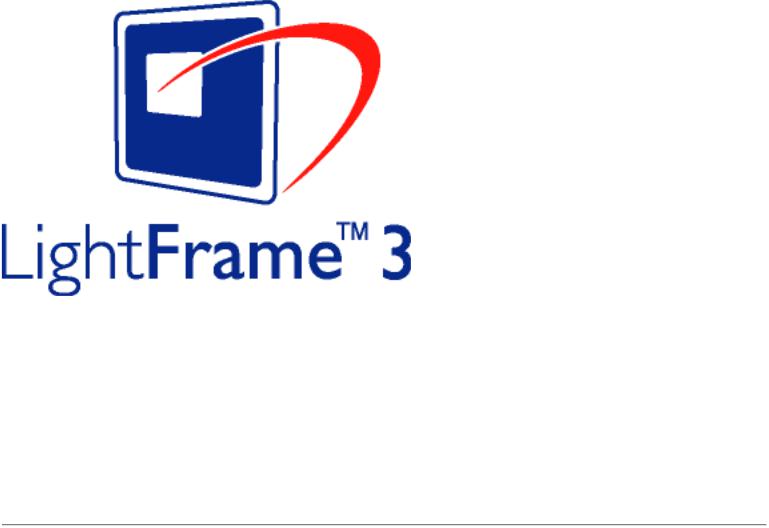
107F Product Information
RETURN TO TOP OF THE PAGE
Technical Specifications*
CRT
•Size and deflection
•Dot pitch
•Horizontal pitch
•Tube type
•Phosphor
•Recommended display area
•Maximum display area
SCANNING
17 inch / 41 cm ; 90° deflection angle
0.25 mm
0.21 mm
Shadow mask, Real Flat, high contrast, anti-glare, antistatic, anti reflection
P22
12.0" x 9.0" / 306 x 230 mm
12.8" x 9.6" / 325 x 244 mm
file:///D|/EDFU/crt_17_5/edoc/ENGLISH/107F/PRODUCT/PRODUCT.HTM (7 of 12)7/15/2004 5:32:43 PM
107F Product Information |
|
|
• Horizontal scanning |
30 |
- 71 KHz |
• Vertical scanning |
50 |
- 160 Hz |
VIDEO
• Video dot rate |
120 MHz |
• Input impedance |
|
- Video |
75 ohm |
- Sync |
4.7 kOhm |
• Input signal levels |
0.7 Vpp |
• Sync input signal |
Separate sync |
• Sync polarities |
Positive and negative |
WHITE COLOR TEMPERATURE
Chromaticity CIE coordinates: |
|
|
• at 9300 |
degrees K |
x = 0.283 / y = 0.297 |
• at 6500 |
degrees K |
x = 0.313 / y = 0.329 |
• at sRGB |
|
x = 0.313 / y = 0.329 |
sRGB
sRGB is a standard for ensuring correct exchange of colors between different devices (e.g. digital cameras, monitors, printers, scanners, etc.)
Using a standard unified color space, sRGB will help represent pictures taken by an sRGB compatible device correctly on your sRGB enabled Philips monitors. In that way, the colors are calibrated and you can rely on the correctness of the colors shown on your screen.
Important with the use of sRGB is that the brightness and contrast of your monitor is fixed to a predefined setting as well as the color gamut. Therefore it is important to select the sRGB setting in the monitor's OSD.
To do so, open the OSD by pressing the OK button on the front of your monitor. Use the down button to go to Color temperature and press OK again. Then move the down button to go to sRGB and press OK again.
file:///D|/EDFU/crt_17_5/edoc/ENGLISH/107F/PRODUCT/PRODUCT.HTM (8 of 12)7/15/2004 5:32:43 PM
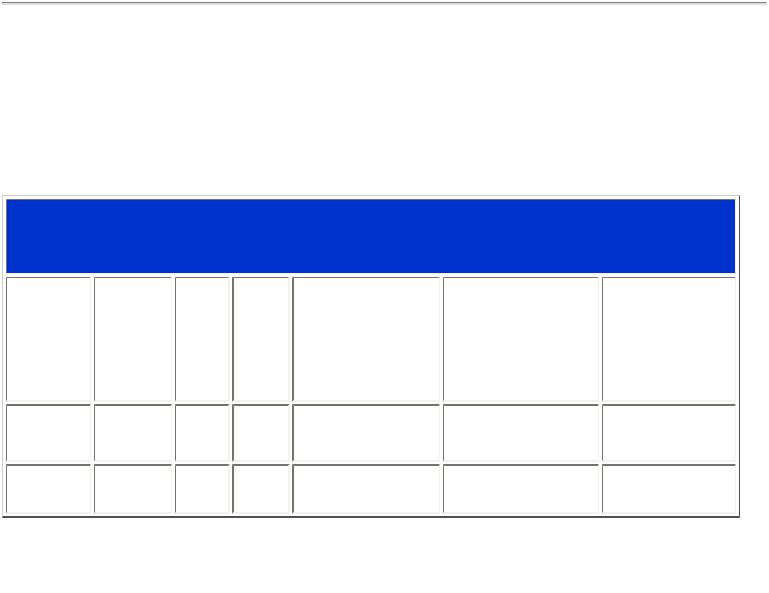
107F Product Information
Exit this OSD.
After this, please don't change the brightness or contrast setting of your monitor. If you change either of these, the monitor will exit the sRGB mode and go to a color temperature setting of
6500K.
For more information on sRGB, please visit: www.srgb.com
* These information are subject to change without notice.
RETURN TO TOP OF THE PAGE
Automatic Power Saving
If you have VESA's DPMS compliance display card or software installed in your PC, the monitor can automatically reduce its power consumption when not in use. And if an input from a keyboard, mouse or other input device is detected, the monitor will automatically "wake up". The following table shows the power consumption and signaling of this automatic power saving features:
Power Management Definition
VESA's |
Video |
H- |
V- |
Power Used |
Power Saving (%) |
LED color |
|
Mode |
sync |
sync |
|||||
|
|
|
|
ON |
Active |
Yes |
Yes |
Typical 68 W |
0 % |
Green |
|
OFF |
Blanked |
No |
No |
< 1W |
99% |
Flashing |
|
Green |
|||||||
|
|
|
|
|
|
This monitor is ENERGY STAR® compliant. As an ENERGY STAR® Partner, PHILIPS has determined that this product meets the ENERGY STAR® guidelines for energy efficiency.
file:///D|/EDFU/crt_17_5/edoc/ENGLISH/107F/PRODUCT/PRODUCT.HTM (9 of 12)7/15/2004 5:32:43 PM

107F Product Information
RETURN TO TOP OF THE PAGE
Physical Specifications
•Dimensions
•Weight
•Power supply
•Temperature (operating)
•Temperature (storage)
•Relative humidity(storage)
15.6" x 15.1" x 16.7" / 397 x 383x 424 mm (including base) 15.6" x 13.1" x 16.7" /397 x 333 x 424 mm (excluding base)
15.5 kg
100-240 VAC, 60-50Hz
(Please refer to rating label)
0° to 40°C / 32° to 104°F -25° to +65°C / -13° to +149°F 5% to 95%
*Resolution 1280 x 1024, standard size, contrast max., brightness 50%, 9300°, full white pattern.
*These information are subject to change without notice.
RETURN TO TOP OF THE PAGE
Pin Assignment
The 15-pin D-sub connector (male) of the signal cable (IBM systems):
file:///D|/EDFU/crt_17_5/edoc/ENGLISH/107F/PRODUCT/PRODUCT.HTM (10 of 12)7/15/2004 5:32:43 PM

107F Product Information
 PinNo.
PinNo.  Assignment
Assignment
1  Red video input
Red video input
2  Green video input 3
Green video input 3  Blue video input
Blue video input
4Identical output - connected to pin 10
5 |
Ground |
6 |
Red video ground |
7 |
Green video ground |
8 |
Blue video ground |
 PinNo.
PinNo.  Assignment
Assignment
9  +5V DDC supply 10
+5V DDC supply 10  Logic ground
Logic ground
11Identical output - connected to pin 10
12  Serial data line (SDA)
Serial data line (SDA)
13  H. Sync / H+V
H. Sync / H+V
14  V. Sync (VCLK for DDC)
V. Sync (VCLK for DDC)
15  Data clock line (SCL)
Data clock line (SCL)
RETURN TO TOP OF THE PAGE
Views
Follow the links to see various views of the monitor and its components.
Front View
Rear View
file:///D|/EDFU/crt_17_5/edoc/ENGLISH/107F/PRODUCT/PRODUCT.HTM (11 of 12)7/15/2004 5:32:43 PM
107F Product Information
RETURN TO TOP OF THE PAGE
file:///D|/EDFU/crt_17_5/edoc/ENGLISH/107F/PRODUCT/PRODUCT.HTM (12 of 12)7/15/2004 5:32:43 PM
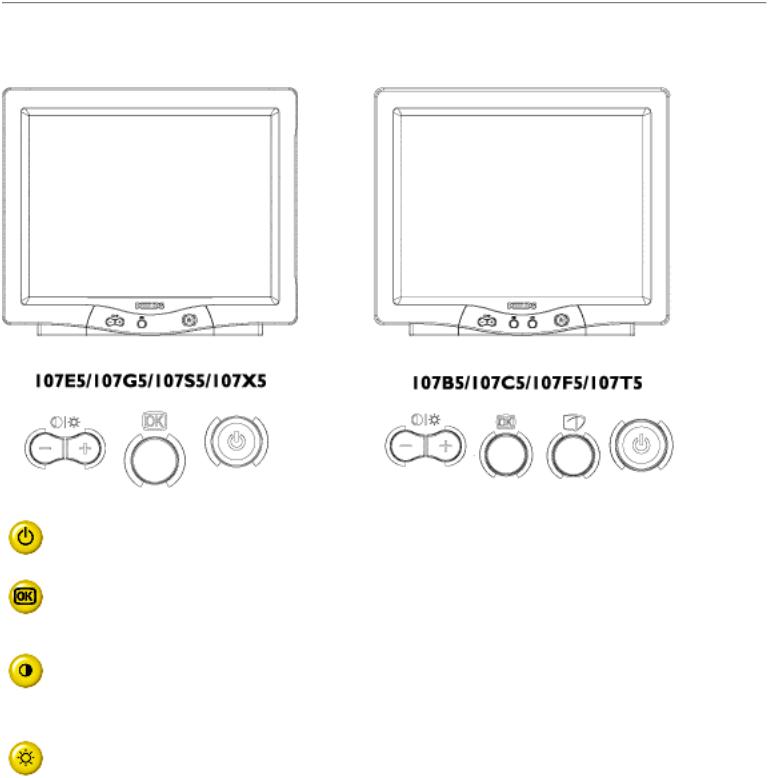
Installing your Monitor
Installing your Monitor
Front View • Rear View • 6G3B11 Multimedia Base (option)
Front View
Power button switches your monitor on.
OK button which when pressed will take you to the OSD controls
Contrast hotkey. When the "-" button is pressed, the adjustment controls for the CONTRAST will show up.
Brightness hotkey. When the "+" button is pressed, the adjustment controls for BRIGHTNESS will show up.
file:///D|/EDFU/crt_17_5/edoc/ENGLISH/INSTALL_6/INSTALL.HTM (1 of 3)7/15/2004 5:32:44 PM
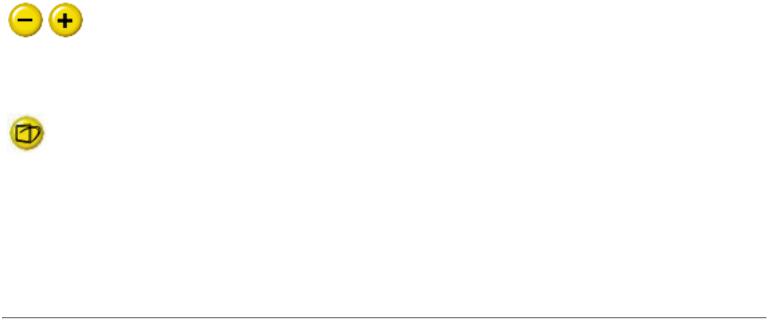
Installing your Monitor
"-" and "+" buttons, are used for adjusting the OSD of your monitor.
LightFrame™ hotkey. When the button is pressed, the highbrightness function of LightFrame™ will show up.
RETURN TO TOP OF THE PAGE
Rear View
file:///D|/EDFU/crt_17_5/edoc/ENGLISH/INSTALL_6/INSTALL.HTM (2 of 3)7/15/2004 5:32:44 PM
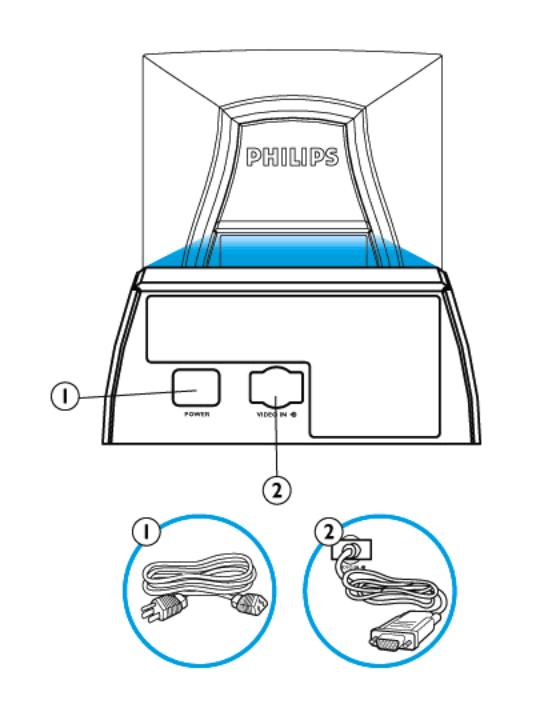
Installing your Monitor
1.Power in - attach power cable here.
2.Video In - this is a cable which is already attached to your monitor. Connect the other end of the cable to your PC.
RETURN TO TOP OF THE PAGE
file:///D|/EDFU/crt_17_5/edoc/ENGLISH/INSTALL_6/INSTALL.HTM (3 of 3)7/15/2004 5:32:44 PM
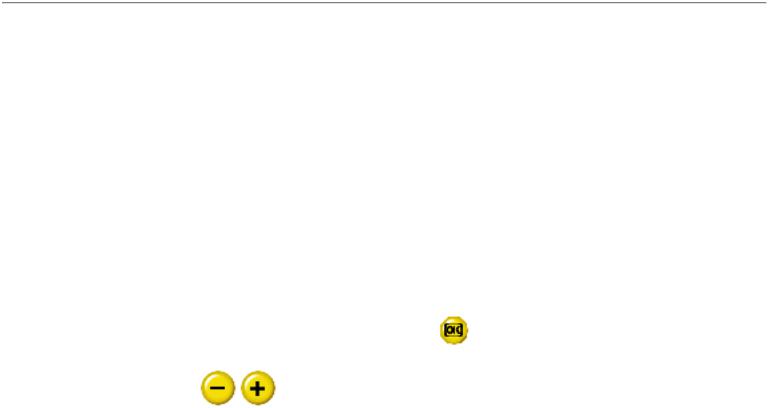
On-Screen Display
On-Screen Display
Description of the On-Screen Display • The OSD Tree • The OSD Controls
Description of the On Screen Display
What is the On-Screen Display?
This is a feature in all Philips monitors which allows an end-user to adjust screen performance of monitors directly through an on-screen instruction window. The user interface provides userfriendliness and ease-of-use when operating the monitor.
Basic and simple instruction on the control keys. |
|
|
On the front controls of your monitor, once you press the |
button, the On Screen Display (OSD) |
|
Main Controls window will pop up and you can now start making adjustments to your monitor's |
||
various features. Use the |
to make your adjustments within. |
|
file:///D|/EDFU/crt_17_5/edoc/ENGLISH/OSD_2/OSDDESC.HTM (1 of 4)7/15/2004 5:32:44 PM
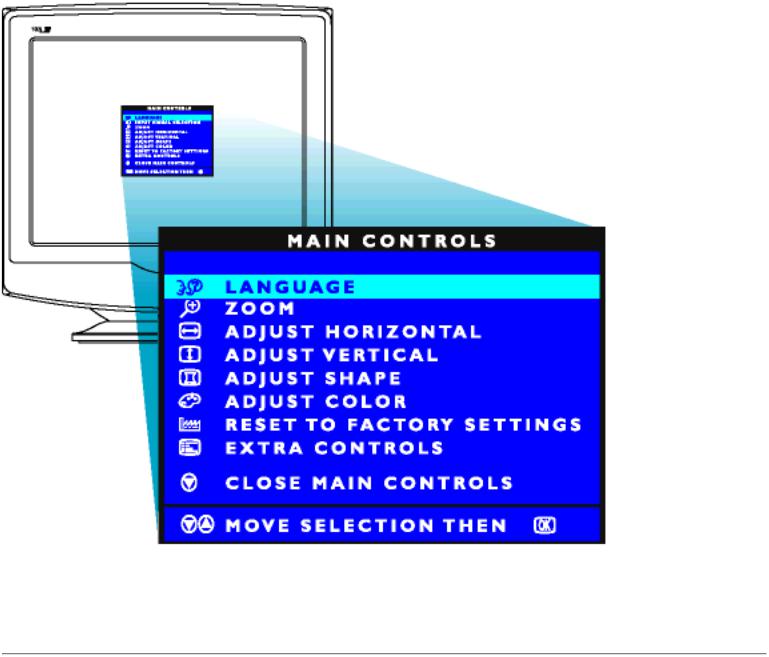
On-Screen Display
RETURN TO TOP OF THE PAGE
The OSD Tree
Below is an overall view of the structure of the On-Screen Display. You can use this as reference when you want to later on work your way around the different adjustments.
Your monitor may not include all the items in the OSD tree shown below.
file:///D|/EDFU/crt_17_5/edoc/ENGLISH/OSD_2/OSDDESC.HTM (2 of 4)7/15/2004 5:32:44 PM
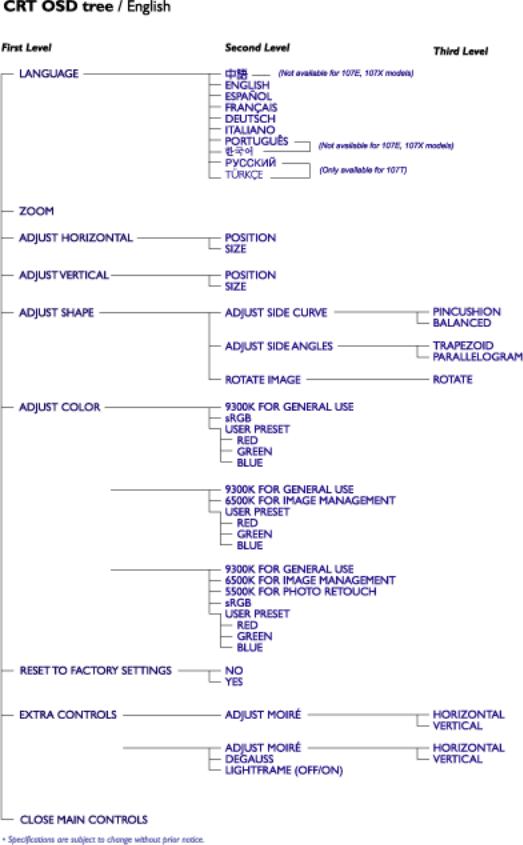
On-Screen Display
RETURN TO TOP OF THE PAGE
file:///D|/EDFU/crt_17_5/edoc/ENGLISH/OSD_2/OSDDESC.HTM (3 of 4)7/15/2004 5:32:44 PM
On-Screen Display
file:///D|/EDFU/crt_17_5/edoc/ENGLISH/OSD_2/OSDDESC.HTM (4 of 4)7/15/2004 5:32:44 PM

Customer Care and Warranty
Customer Care & Warranty
PLEASE SELECT YOUR COUNTRY/AREA TO READ THE WARRANTY COVERED:
WESTERN EUROPE: Austria • Belgium • Cyprus • Denmark • France • Germany • Greece • Finland • Ireland • Italy • Luxembourg • the Netherlands • Norway • Portugal • Sweden • Switzerland • Spain • United Kingdom
EASTERN EUROPE: Czech Republic • Hungary • Poland • Russia • Turkey • Bulgaria
LATIN AMERICA: Antilles • Argentina • Brazil • Chile • Colombia • Mexico • Paraguay • Peru • Uruguay • Venezuela
NORTH AMERICA: USA & Canada
PACIFIC: Australia • New Zealand
ASIA: Bangladesh • China • Hong Kong • India • Indonesia • Japan • Korea • Malaysia • Pakistan • Philippines • Singapore • Taiwan • Thailand
AFRICA: Morocco • South Africa
MIDDLE EAST: Dubai • Egypt
file:///D|/EDFU/crt_17_5/edoc/ENGLISH/WARRANTY/WARRANTY.HTM7/15/2004 5:32:45 PM
Frequently Asked Questions
Frequently Asked Questions
1.What does the "Designed for Windows" logo signify?
The "Designed for Windows" logo means your Philips monitor fulfills the requirements and recommendations of the PC9x (97, 98, or 99) System Design Guide and passes stringent WHQL tests.
2. What is USB?
Think of USB as a smart plug for PC peripherals. USB automatically determines resources (like driver software and bus bandwidth) required by peripherals. USB makes necessary resources available without user intervention. Its three main benefits are:
●USB eliminates "Case angst," the fear of removing the computer case to install circuit board cards - that often require adjustment of complicated IRQ settings -- for add-on peripherals.
●USB does away with "port gridlock." Without USB, PCs are normally limited to one printer, two
Com port devices (usually a mouse and modem), one Enhanced Parallel Port add-on (scanner or video camera, for example) and a joystick. More and more peripherals for multimedia computers come on the market every day. With USB, up to 127 devices can run simultaneously on a computer.
●USB permits "hot plug-in." No need to shut down, plug in, reboot and run set up to install peripherals. No need to go through the reverse process to unplug a device. Bottom line: USB transforms today's "Plug-and-Pray" into true Plug-and-Play!
3.What is a USB hub?
Think of USB hub as a extension of USB ports. Normally, the PC provides only one or two USB ports. To connect additional USB devices, you need a USB hub.
4.What is Philips Monitors USB hub solution?
Increasingly, monitors include USB hub functionality. But not all users need or want a USB hub. To give users freedom of choice, Philips provides an optional USB hub (type number PCUH411). The USB hub consists of two parts that are normally connected: one is functional, the other aesthetic. The aesthetic element is a removable cover. With the cover removed, the USB hub can be attached to the base or pedestal of monitor. The attached USB hub can be rotated to any position around the monitor's base. With this innovative Philips solution, your USB hub is always within reach for convenient connection and disconnection of USB peripherals.
file:///D|/EDFU/crt_17_5/edoc/ENGLISH/FAQ.HTM (1 of 14)7/15/2004 5:32:47 PM
Frequently Asked Questions
6.What models are Mac compatible?
All listed Philips monitors are Mac compatible. BUT, you may need an adapter to connect the monitor to your Mac system. Please contact your dealer/reseller for details.
7.What is TCO?
TCO is a Swedish abbreviation for the Swedish Confederation of Professional Employees.
8.What is MPR?
MPR is a Swedish abbreviation for the Swedish National Board of Measurement and Testing.
9.What are the differences between MPRII, TCO92, TCO95, TCO99 and TCO'03?
In the general hierarchy of standards, TCO'03/TCO99 is the highest level of certification. Next is TCO95, which is "better" than TCO92, which, in turn, is better than MPRII. Below, we compare the standards in each category.
-TCO 92 Phase out: June 30, 2000 -TCO 95 Will be end December 31, 2003
Emissions:
MPRII: Set low emission rules for visual displays. TCO92: Imposed more stringent standards than MPRII. TCO95: Further toughened TCO92 rules.
TCO99: Delineated even more severe standards and test procedures than TCO95. TCO'03: Same as TCO99 standard + Testing uncertainty.
Safety:
MPRII: No requirement.
TCO92/95/99/03: All set requirements.
file:///D|/EDFU/crt_17_5/edoc/ENGLISH/FAQ.HTM (2 of 14)7/15/2004 5:32:47 PM
Frequently Asked Questions
Energy Saving:
MPRII: No requirement.
TCO92: Standby mode < 30W, Off mode < 8W
TCO95: Standby mode < 30W, Off mode < 8W
TCO99: Standby mode < 15W, Off mode < 5W
TCO'03:Standby mode < 15W, Off mode < 5W
Visual Ergonomics:
MPRII: No requirement. TCO92: No requirement.
TCO95: Set ergonomic rules including minimum contrast level, flicker and jitter. TCO99: Tightened TCO95 rules.
TCO'03: Tighten TCO99 rule for CRT and new requirement of screen color for TFT LCD Monitors.
Ecology:
MPRII: No requirement. TCO92: No requirement.
TCO95: Set general ecological standards including recycling preparation, environmental policy and environmental certification.
TCO99: Further tightened TCO95 norms. TCO'03:Require the recycling information to users.
10. How do I enable the energy saving function?
Go to 'My Computer' and select 'Control Panel' followed by 'Monitor Control.' Select "All default selection' and choose your Philips monitor model from the default driver list. Plug and Play will automatically enable the EPA tick box for you. In DOS or Windows 3.1, you must first make sure your PC supports power saving.
11. What is refresh rate?
file:///D|/EDFU/crt_17_5/edoc/ENGLISH/FAQ.HTM (3 of 14)7/15/2004 5:32:47 PM
Frequently Asked Questions
"Refresh rate" describes the number of times an entire screen is vertically scanned each second. In other words: If a monitor's refresh rate is 85 Hz, its screen is refreshed - or vertically scanned - 85 times per second. A higher the refresh rate means better image stability and less flicker. A high refresh rate helps users who work long hours in front of a monitor avoid eye fatigue and stress. To change the refresh rate, go into "Start/Settings / Control Pannel / Display / Properties / Setting/Advance/Adaptor" Windows settings of the computer, the monitor will automatically adjust itself to the video card.
12. Why does the picture on the screen appear to flicker?
A low refresh rate or electrical interference typically causes flickering in the picture. Possible solutions include the following:
●Verify that the proper drivers are installed for your video card
●Make sure that all electrical devices (such as mobile phones) are at least 1m from the monitor
●Place the monitor in another physical location away from electrical interference
●Adjust the refresh rate to 75hz or higher.
13.How do I adjust my monitor's resolution?
Available resolutions are determined by the capabilities of your video card and graphic driver. Under Windows '95, you may select the desired available resolution through the 'Display properties/Settings' menu.
14. How can I adjust the size, position and rotation of my screen?
Depending on the model you own, you can use your CustoMax Software, On Screen Display (OSD) or control knobs located on the monitor.
15. What if I get lost when making monitor adjustments?
file:///D|/EDFU/crt_17_5/edoc/ENGLISH/FAQ.HTM (4 of 14)7/15/2004 5:32:47 PM
Frequently Asked Questions
Simply press OK button then select "Reset to factory settings" to restore all settings.
16. What is LightFrame ?
LightFrame is a Philips technology breakthrough which offers a unique and revolutionary solution for
boosting a monitor 's brightness and sharpness. With LightFrameTM, the user experiences TV quality performance for video or photos without deterioration to the monitor 's performance in windows used for other applications.
17. How does LightFrame work?
LightFrame consists of a software application and an Integrated Circuit (IC) embedded in the monitor. Together, they boost brightness and sharpness in a user defined window or screen area. Unique
LightFrameTM technology dramatically improves photo and video display quality.
18. Why is LightFrame important to me?
With LightFrame , selected Philips monitors deliver TV quality video and photo display while maintaining monitor performance for text-based applications. The result is that movies and other video are brighter and livelier; photos are more vibrant and lifelike.
file:///D|/EDFU/crt_17_5/edoc/ENGLISH/FAQ.HTM (5 of 14)7/15/2004 5:32:47 PM
